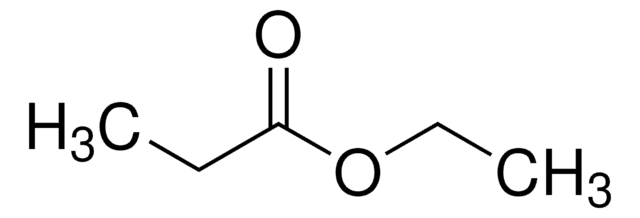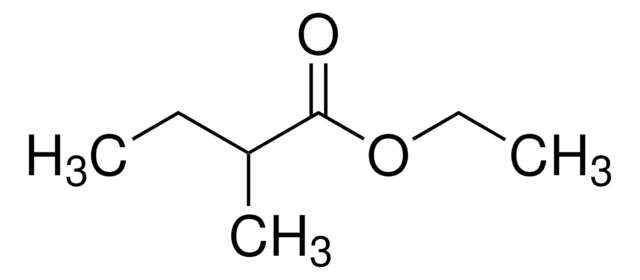Kluczowe dokumenty
148962
Ethyl hexanoate
≥99%
Synonim(y):
Caproic acid ethyl ester, Ethyl caproate
About This Item
Polecane produkty
gęstość pary
5 (vs air)
Poziom jakości
Próba
≥99%
Formularz
liquid
współczynnik refrakcji
n20/D 1.407 (lit.)
bp
168 °C (lit.)
gęstość
0.869 g/mL at 25 °C (lit.)
grupa funkcyjna
ester
ciąg SMILES
CCCCCC(=O)OCC
InChI
1S/C8H16O2/c1-3-5-6-7-8(9)10-4-2/h3-7H2,1-2H3
Klucz InChI
SHZIWNPUGXLXDT-UHFFFAOYSA-N
Szukasz podobnych produktów? Odwiedź Przewodnik dotyczący porównywania produktów
Opis ogólny
Hasło ostrzegawcze
Warning
Zwroty wskazujące rodzaj zagrożenia
Zwroty wskazujące środki ostrożności
Klasyfikacja zagrożeń
Flam. Liq. 3
Kod klasy składowania
3 - Flammable liquids
Klasa zagrożenia wodnego (WGK)
WGK 1
Temperatura zapłonu (°F)
127.4 °F - closed cup
Temperatura zapłonu (°C)
53 °C - closed cup
Środki ochrony indywidualnej
Eyeshields, Faceshields, Gloves, type ABEK (EN14387) respirator filter
Wybierz jedną z najnowszych wersji:
Masz już ten produkt?
Dokumenty związane z niedawno zakupionymi produktami zostały zamieszczone w Bibliotece dokumentów.
Klienci oglądali również te produkty
Nasz zespół naukowców ma doświadczenie we wszystkich obszarach badań, w tym w naukach przyrodniczych, materiałoznawstwie, syntezie chemicznej, chromatografii, analityce i wielu innych dziedzinach.
Skontaktuj się z zespołem ds. pomocy technicznej












